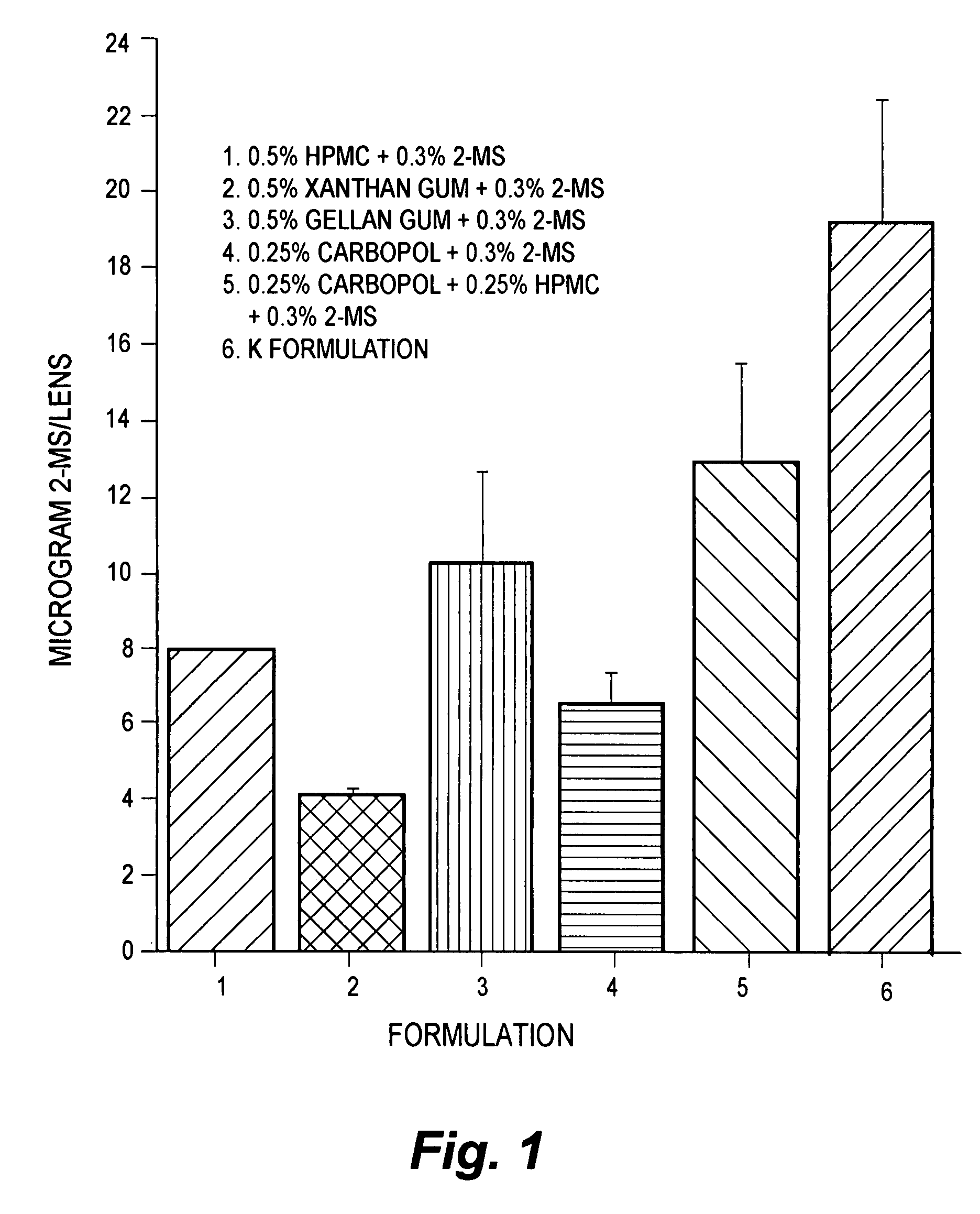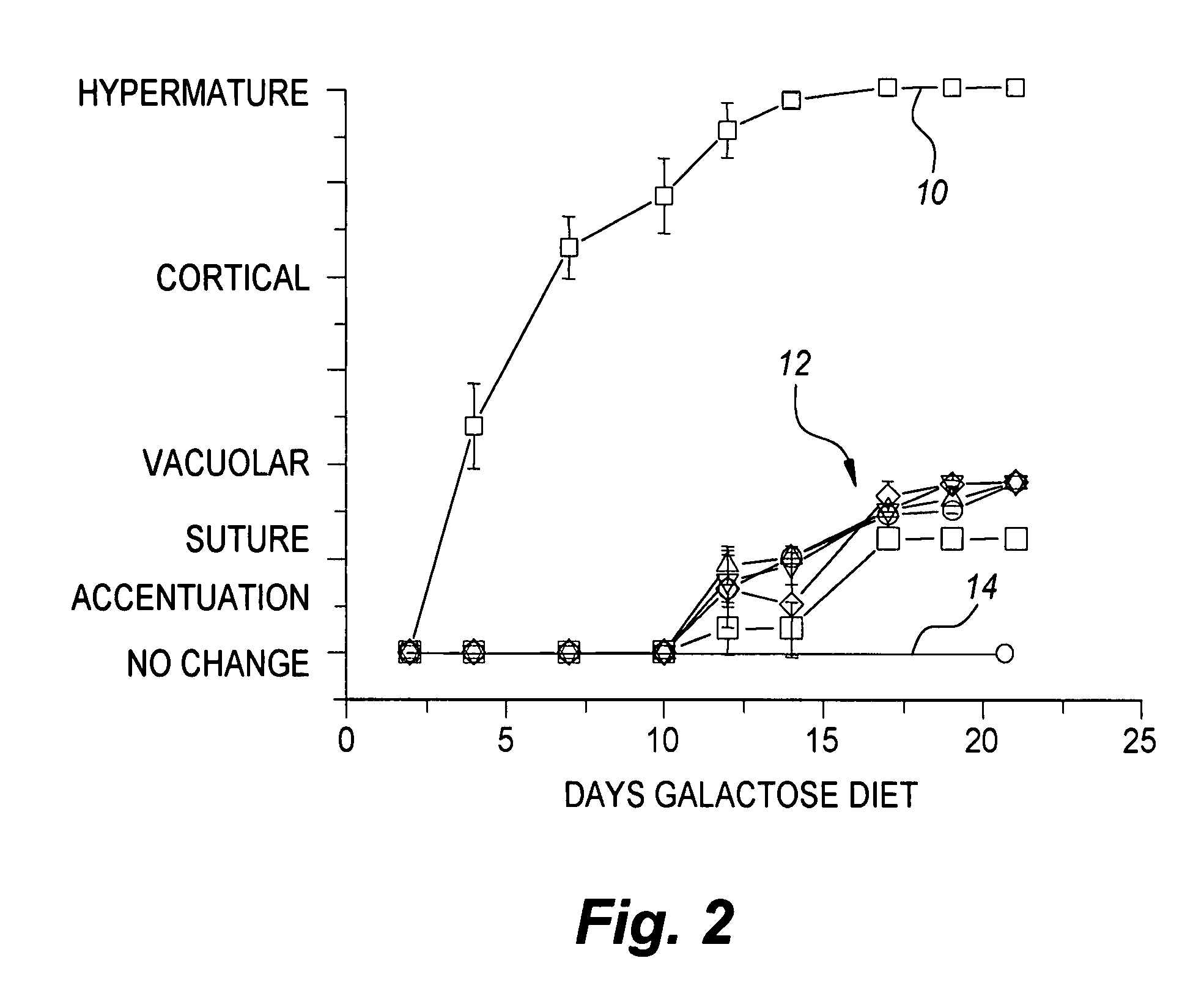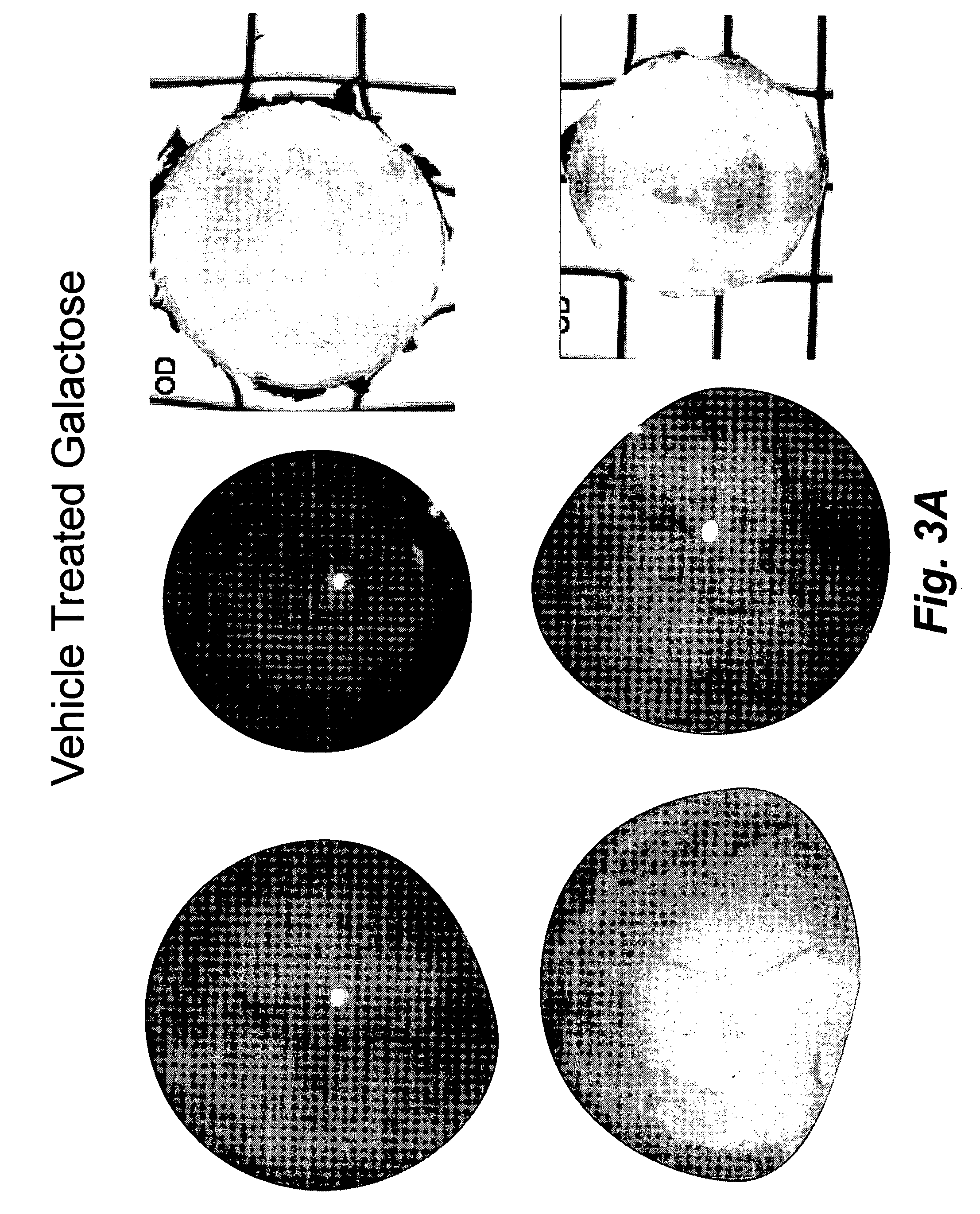Topical treatment of cataracts in dogs
a technology for cataracts and dogs, applied in the field of topical treatment of cataracts in dogs, can solve the problems of insufficient hexokinase available to metabolize all intracellular glucose, accumulation of sorbitol in tissues, and insufficient sorbitol dehydrogenase to oxidize sorbitol to fructose, etc., to improve stereospecific synthesis, reduce the number of stages, and simplify the effect of synthesis
- Summary
- Abstract
- Description
- Claims
- Application Information
AI Technical Summary
Benefits of technology
Problems solved by technology
Method used
Image
Examples
example 1
Synthesis of 2R,4S-6-fluoro-2-methyl-spiro[chroman-4,4′-imidazoline]-2′,5′-dione
[0046]As compared to conventional methods for synthesizing this stereoisomer of 2-methyl sorbinil, the overall synthesis of the present invention reduces the number of steps from eleven to eight steps and the overall yield is increased from 3.1% to 15%. In this synthesis, resolution using chymotrypsin, as exemplified in U.S. Pat. No. 4,841,079, issued Jun. 20, 1989 to F. J. Urban, for example, has been replaced by a selective crystallization step. The final product was tested and found identical to 2-MS previously obtained from Eisai Co., Ltd. of Tokyo, Japan (assignee of the '704 patent to Ueda et al.) by NMR, MS, melting point, HPLC elution, and biological activity.
[0047]All reactions and compound purities were monitored by reverse phase HPLC using a 250×4.6 mm C18 Luna column (5μ100 Å) with a mobile phase of 75:25 methanol:water at a flow rate of 0.9 mL / min, and detection at 220, 254 and 280 nm. This ...
example 2
Testing of Topical Carriers
[0080]To maximize the topical administration of 2R-MS, vehicles or carriers of different viscosities comprised of polymers, gums, or viscosity enhancers were prepared. Formulations containing 3% of the AR inhibitor 2R-MS were prepared using the five different vehicles, which included 0.5% hydroxypropyl methylcellulose (HPMC); 0.5% xanthan gum; 0.5% gellan gum; 0.25% carbopol; and 0.25% carbopol (0.25% w / v)+0.25% HPMC. All were prepared in modified Sorensen's Phosphate Buffer, pH of 7.4. The drug and each vehicle were suspended directly in a sterile eye drop bottle by vortexing vigorously for at least one minute. The particle sizes of the suspension were subsequently reduced by sonication. All suspensions were vortexed prior to topical administration. An additional topical carbomer gel formulation consisting of 2.5% water soluble high molecular weight polymer of acrylic acid cross-linked with a polyether of sucrose was also developed. Carbomers are widely u...
example 3
Reversal of Cataract Damage
[0088]While prevention studies in rats indicate that sugar cataracts can be prevented when administered at the onset of galactosemia or diabetes, limited intervention studies suggest that reversing cataract formation can only be achieved at the early vacuolar stage of cataract formation. Since many dogs are diagnosed with diabetes mellitus after owners bring their dogs to veterinarians due to apparent lens changes, significant biochemical changes already have occurred. From a business perspective, a therapeutic treatment for sugar cataracts in dogs should not only arrest the progression of cataracts in dogs with clear lenses, but also reverse sugar cataracts in their early state. Therefore, a pilot study with topical treatment of the present invention was initiated to evaluate the ability of the topical treatment to ameliorate initial cortical cataract formation and its further progression.
[0089]Ten 6-month old male beagles, obtained from Marshall Farms, (...
PUM
| Property | Measurement | Unit |
|---|---|---|
| flow rate | aaaaa | aaaaa |
| pH | aaaaa | aaaaa |
| temperature | aaaaa | aaaaa |
Abstract
Description
Claims
Application Information
 Login to View More
Login to View More - R&D
- Intellectual Property
- Life Sciences
- Materials
- Tech Scout
- Unparalleled Data Quality
- Higher Quality Content
- 60% Fewer Hallucinations
Browse by: Latest US Patents, China's latest patents, Technical Efficacy Thesaurus, Application Domain, Technology Topic, Popular Technical Reports.
© 2025 PatSnap. All rights reserved.Legal|Privacy policy|Modern Slavery Act Transparency Statement|Sitemap|About US| Contact US: help@patsnap.com



